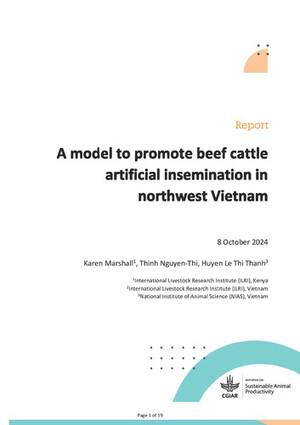
Seasonal dynamics in dry matter degradation of browse in cattle, sheep and goats
Abstract
Rumen degradation characteristics of DM in edible forage of 25 multipurpose tree and shrub fodders (MPTS) harvested at the end of the main-wet (April-August 1992), minor-wet (September-November 1992) and dry (December 1992-March 1993) seasons were determined in rumen-fistulated Bunaji cattle (BC), West African Dwarf (WAD) sheep (WS) and WAD goats (WG) in Ibadan, southwestern Nigeria. Air dry samples of edible forage were incubated for 3, 6, 12, 36, 48, 72 and 96 h in three each of BC, WS and WG castrates fed a basal diet of Panicum maximum supplemented with Gliricidia sepium leaves. Dry matter degradation constants were estimated from non-linear regression. Concentrations of crude protein, neutral detergent fibre and insoluble proanthocyanidins varied widely among seasons. Classification of the MPTS based on a (soluble fraction), b (rumen degradable fraction), c(rate of degradation)) and PD (potential degradation) varied among BC, WS and WG within season. Using PD as an index of forage quality, the MPTS were classified into high, medium and low groups. The b and PD in BC during the dry season were significantly higher than in WS and WG. The results suggested the existence of intraspecies and interspecies variation in rumen degradation characteristics of DM of the MPTs in BC, WS and WG. The PD in BC was highly correlated to WS and WG in the wet seasons.Thus, rumen degradation could be useful in the initial screening of MPTS for further nutritional studies.
Citation
Small Ruminant Research;25(2): 129-140









